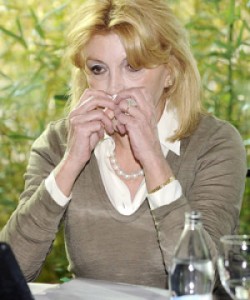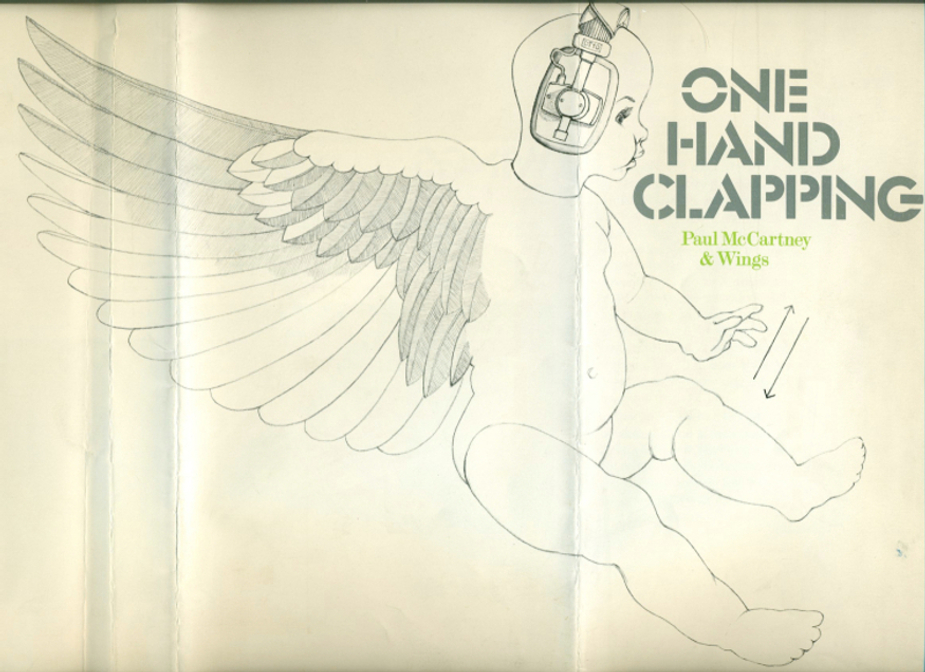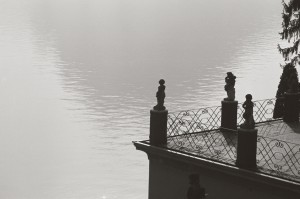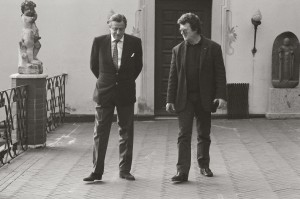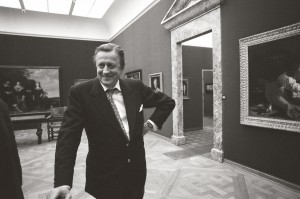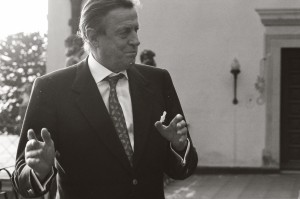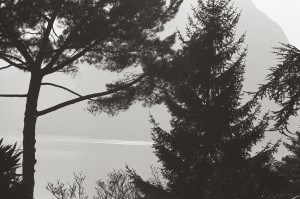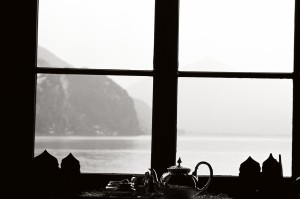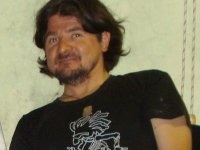The Times They Are A Changin (The Sale of Villa Favorita, Lugano – Part 1), by Caroline D Schmitz
| The lack of a fair distribution of assets in the world has reached a stage where the wealthiest 1% own more than the remaining 99% of the population, according to Credit Suisse. The Thyssens are a prime example of how a fortune, created through the dilligence of a few founding fathers and generations of their plants’ workforce, has multiplied exponentially through the use of financial instruments, multiple citizenships, political lobbying, press manipulation and, most of all, tax avoidance. It was the last great Thyssen himself, Hans Heinrich („Heini“) Thyssen-Bornemisza, who told us: „I am a tax evader by profession. If you wanted to be correct, I should be in jail“. Villa Favorita in Lugano, Ticino, Switzerland, the closest the Thyssen-Bornemiszas ever got to a family seat, has been the symbol of their often rapacious attitude – hidden behind the veneer of their famous art collection – which has until recently gone unquestioned, accepted and even admired by the wider public.
Even before the First World War, Heini`s grandfather August, whose power base were the German steel mills and coal fields of the Ruhr, created a family bank in Rotterdam, the Bank voor Handel en Scheepvaart (BVHS), as an offshore bank for the Thyssen industrial empire. Heini’s father Heinrich, who had gained Hungarian nationality and a contrived aristocratic status through marriage, settled in Holland, took charge of the bank and fended off the post-war allied reparation claims, as well as the spiralling early 1920s hyperinflation. His Dutch lawyers created further financial instruments such as Rotterdamsch Trustees Kantoor and Holland American Investment (respectively Trading) Corporations. This situation later allowed Heini to consequently deny the family`s German connections while they continued well into the 1980s to draw their profits from the country. The Thyssens were very well connected on the highest political level. They hosted Adolf Hitler several times at their residences in Holland and Germany during the Weimar Republic and, amongst other contributions, made a loan of 350,000 Reichsmark through BVHS to finance the Brown House in Munich. After August’s death in 1926, and on the advice of Heinrich`s social and financial mentor Eduard von der Heydt, the Thyssens began to orientate themselves towards Switzerland. Heinrich started buying works of art to reinforce his „gentlemanly“ image but mainly, according to Heini, „as an investment and a way of moving money“. The 530 paintings he acquired between 1928 and 1938, though of questionable quality and provenance in many cases, and earning negative reviews when the first 428 were exhibited as „Schloss Rohoncz Collection“ in Munich in 1930, laid the foundation of the Thyssen-Bornemisza Collection now housed in Spain. In 1926 and 1931, in the Swiss canton of Schwyz, Heinrich`s advisors created the Kaszony and Rohoncz Collection Family Foundations to hold and protect his inherited corporate assets and his art purchases respectively. Then, in 1932, he purchased 50,000 m² of Lake Lugano shoreline, comprising sub-tropical gardens and 12 buildings, a plot which had once been a whole quarter of noble villas, the most important being Villa Favorita. As Heinrich had bought the main residence complete with all furnishings in order to immerse himself in the style of the former princely owner, Leopold of Prussia, from 1936 to 1940 he had another building erected to house his art. But the exact logistics of the transfer of the paintings from their various points of purchase into Switzerland has remained shrouded in secrecy (its move out of Switzerland to Madrid half a century later was almost celebratory by comparison!). In 1937, Heinrich’s Lugano lawyer Roberto van Aken, achieved a most favourable tax deal for his client with the Ticino authorities, as well as a Swiss foreigner’s passport, on the understanding that the collection be opened to the public. But while that same year his curator Rudolf Heinemann produced the first Lugano-based catalogue, the collection remained closed. Presumably neither side thought it wise to draw attention to the fact that this German tycoon was sheltering in Switzerland as his businesses supported Hitler’s genocidal war of aggression and exploited industrial slave labour – even though Helvetia profited from coal imports out of Heinrich’s Walsum mine through the Swiss Bank Corporation in Zurich. His German managers regularly visited him there, including the director of the August Thyssen Bank in Berlin, which organised funds for the world-wide German counter-espionage through Switzerland. After 1945, this mutually beneficial Swiss safehaven arrangement guaranteed that Heinrich, who was initially named on the list of war criminals to be judged at the Nuremberg war crimes trials, entirely escaped allied retribution. He died at Villa Favorita in 1947, untouched by public controversy, though ravaged by his long-standing, advanced alcoholism. The public myth of the Thyssen-Bornemiszas’ untainted background could now fully develop. His main heir Heini sorted out the vast inheritance and negotiated a new tax deal with the Swiss authorities by promising in 1948 to open the collection to the public. And so, Heini Thyssen, who had only ever possessed questionable Hungarian identity papers extended him by his step-father, Janos Wettstein, from the Hungarian embassies in The Hague and Berne, in 1950, after several attempts and with American assistance, gained full Swiss citizenship. Having become a founding member of the jet set and polished his image with the help of his British, third wife Fiona, in the early 1960s Heini turned to buying art to distance himself from the shadows of the family history. Through Eric Pfaff, an international trust lawyer, working out of offices in Luxembourg and the Isle of Man, he discovered Bermuda and had his first financial instruments created there, while many of his art purchases were made tax-efficiently through Liechtenstein-based instruments such as Art Council Establishment and Internationale Finanz- und Kunsthandel AG. Then, in the mid-1970s, the first light breeze of change started wafting in as the Ticino authorities introduced more rigorous tax laws. But far from agreeing a compromise, Heini Thyssen responded by moving his official residence first to Monaco and later on to the United Kingdom. When he also threatened to close the gallery at Villa Favorita – by then one of the town’s and canton’s main tourist attractions – his Lugano lawyer, Dr Franco Masoni, managed to push through an extension of his client’s advantageous Swiss tax deal. Clearly it was in Heini’s power to pressurise the city fathers by inviting them to „consider the detrimental effect [this closure would have] on suppliers and employees“ and adding with sarcastic irony that he felt sure his „leaving the canton could be achieved without any publicity“… Despite the continuous Swiss incubation of the fortune of Heini Thyssen-Bornemisza, who, in his 60s, by now had three ex-wives and four children, it was in Bermuda, under British law, that his advisors created, in 1983, two family trusts to protect his Thyssen Bornemisza Group (TBG) and his collection of paintings and artefacts from possible feuds over inheritance. The latter had by now trippled in size to over 1,500 works of art and its value was being promoted through auction houses, international travelling exhibitions and a lavish, Sotheby’s-promoted „catalogisation“ programme. Shortly after his final marriage in 1985, in England, to the Spanish fire-cracker Carmen Cervera (who, it is thought, may already have enjoyed Swiss citizenship as a result of her 1960s marriage to Lex Barker), she too began, with Thyssen money, to buy art and, immediately, instruments, such as Nautilus Trustees Limited in the south-Pacific Cook Islands, were created for her use. It was not least at her instigation, in the early 1990s, that Heini Thyssen sold half his collection to Spain for 350 million dollars (plus a similar cost in housing and complex administration fees) and divided the net proceeds, as well as the other half of the collection between his heirs, through further, tax-free Bermudan sub-trusts. Now Carmen, with Heini’s help, could turn to creating and advertising her own Carmen Thyssen-Bornemisza Collection, thus spinning the money machine ad infinitum, while simultaneously creating a new, higher-quality personal image for herself. Considering the depth of gratitude the Thyssens should have felt towards Switzerland for shielding them from revelations of Nazi collaboration and profiteering, this end to the Villa Favorita public gallery was more than ignominious. Heini topped his arrogant attitude by denying the generous offer that the Swiss had actually made him, in 1986, for keeping his collection in Lugano. His daughter Francesca continued to keep the gallery alive for a while with a few exhibitions, but some fifteen years ago it closed its doors for the last time. It is difficult to understand, apart from their greed, why the Thyssens did not have the grace to leave an endowment of a small „starter“ selection of paintings, plus the villa and grounds as a gift to the town. Considering the size of their fortune, they could easily have done so (and one day it might turn out that it would have been a wise thing to have done). But presumably, having achieved an advantageous tax deal in Spain, based on their collection, such a gift would have caused…….. a tax problem!? It was Carmen Thyssen-Bornemisza’s charming lawyer Jaime Rotondo, who in 2013 confirmed to the Spanish press outlet El Confidencial/(in collaboration with the Consorcio Internacional de Periodistas de Investigacion), in a somewhat questionable quote, that „the contracts of technical and cultural assistance she has signed with Spain [for the cession of over 700 paintings of her private collection to various museums means that Carmen Thyssen-Bornemisza can live in Spain all the time she wants without having to pay tax on her patrimony there]“. In 2002, Heini Thyssen died and his widow Carmen inherited his 60 million dollar TBG dividend shortfall and a 132 million dollar share in his private estate, also several houses including the „Dynasty-que“ seat of Villa Favorita. When a year later she submitted to the Lugano building authorities a pre-project for the erection of four modern villas on its grounds, Swiss alarm bells started ringing. The Neue Zürcher Zeitung urged the authorities to „save this Swiss national cultural treasure“ and added that the Swiss Homeland Security Authority (Heimatschutz) had asked the communal, cantonal and federal authorities to act. Even a purchase by all three levels jointly was suggested. But while the paper went to great lengths to accuse officials of „stubborn desinterest“, it failed to mention the asking price, which was only revealed a decade later as being over 100 million Swiss Francs. Then, in 2004, Swiss Info reported that cantonal levels were finally awakening from their „lethargy“ and negotiating with Tita Thyssen over Villa Favorita. The mayor of Lugano said that the lakeside area was placed under the protection of the Ticino cantonal commission of cultural assets and the Swiss federal commission for the protection of historical monuments and landscapes. Tita had renounced building on this area in return for a permit to build behind the gallery. Suddenly, town and canton were in a great hurry to achieve a deal. But still the canton did not wish to make any gifts to Tita, who, a decade ago, was said to have left the place „slamming the door with her collection under her arm“, while Pascal Couchepin, Swiss Minister of the Interior, was quoted as saying he doubted a sale to a private entity could be achieved. A wealthy Lugano municipal councillor then put one million Swiss Francs on the table to help the commune and canton enter negotiations. While in 2010 it became known that Tita Thyssen had sold the last building plot of the grounds for 30 million Euros for the completion of eight Herzog & Meuron-designed luxury apartments by early 2015, negotiations for the sale of the main estate went quiet again. During that time, on the back-drop of a global financial crisis leaving her homeland Spain with a heavy debt burden and big (especially youth) unemployment rate, Tita adopted two surrogate children in California, her son Borja married and had four children and the two started mud-slinging very publicly over inheritance issues. In 2013, it was reported that a court judgment in Bermuda had revealed one of the trusts, which Borja has a 35% entitlement in, alone to be worth 1 billion Swiss Francs. But despite the crisis, the Spanish media at first still treated scenes such as CCTV pictures of Borja breaking into Tita`s office at La Moraleja, Madrid, to gain financial information, or Tita’s very public insistence on paternity testing for Borja’s children as fun entertainment. Later the mood began to change and the Spanish press slowly dropped its tolerant approach, particularly when Offshore-Leaks (via SonntagsZeitung, Spiegel Online, Huffington Post and others) publicised the extent of Carmen Thyssen’s art handling tax avoidance schemes and King Juan Carlos abdicated amidst allegations of widespread corruption amongst the Spanish elite. Suddenly her turning up for board meetings at the Madrid museum in her Rolls Royce Phantom (something her late husband would never have had the bad taste to have done) was said to „leave employees and visitors open-mouthed“. By 2012, while the Swiss business magazine Bilanz was still ranking her as 7th richest woman in Switzerland, in Spain Tita was claiming on a somewhat theatrical level, via Vanitatis, to be going through her own liquidity crisis, which she said was caused by „800 million Euros worth [a non-binding valuation by Sotheby’s] of art loaned free of charge by myself to the state of Spain for 13 years“. She could hardly hide her frustration at the Spanish still not having bought her paintings from her, as they had once done with her husband’s collection. But with the precarious state of the monarchy adding to the economic crisis, she should perhaps have been grateful that they did not hand her collection back, for her to fund its maintenance, insurance, exhibition etc. Carmen Thyssen was left with no option but to sell a Constable (The Lock) – apparently through Omicron Collections Limited in the Cayman Islands – allegedly for 20 million pounds sterling (doubling the purchase price of a suspiciously high 10 million pounds in 1990) and further humiliated in the summer of 2014 when the Spanish tax authorities carried out a very public raid on her yacht “Mata Mua” in Ibiza, while she was on board (as reported by El Mundo). In her immediate rage she threatened to leave Spain and move back to Villa Favorita with her two adopted girls in tow. Not the first time she had issued such a warning. So the news in December 2014 that Tita Thyssen has sold Villa Favorita to the Italian cheese-making family Invernizzi, for 65 million Euros, was understandably picked up with huge interest by the Spanish media. The 28 days in which Heini`s children had the right to match the sale price and retain the villa in the family have elapsed, and the sale is now final. One presumes Tita will be paying a little parting gift of tax on this deal in Switzerland, regardless of which trust or foundation the ownership of the villa is held in, as she waves good-bye to the country and brings to a close 83 years of a colourful relationship between the Thyssen-Bornemisza family and Ticino. It will be interesting to see how the Swiss will treat their memory of this family now that they have no reason to remain diplomatic, and equally so to see how the Spanish will treat Carmen Thyssen as she can no longer threaten them with a „cultural exodus in reverse“. There is one thing that could be almost guaranteed: that the opportunity once open to Heini Thyssen to play off one country against another, in their eagerness to host his fortune, will not be inherited by his successors. p.s.: At our time of going to press, the Spanish press outlet Economia Digital reveals that Carmen Thyssen has this week bought two properties, for herself and her son Borja, in Andorra, for a total of 10 million Euros and comments: “Tita Cervera has Swiss nationality and since her youth her fiscal residence has been there. But for the last 20 years she has been a habitual resident of the Principality of Andorra. Sources knowledgeable about the aristocrat`s movements have signalled to this paper that she would be finalising a change in her tributary situation according to the double taxation agreements which Andorra holds with different countries and that it will permit her to also transfer her fiscal residence to the country where she actually lives.” With the “99%” of the population of Spain increasingly taking to the streets to complain about the austerity policies, one wonders how much longer these shenanigans of the residual “1%” will last. |
Tags: 1920s hyperinflation, Adolf Hitler, Alcoholism, allied reparation claims, allied retribution, Andorra, art collection, Art Council Establishment, August Thyssen, August Thyssen Bank, Bank voor Handel en Scheepvaart, Berlin, Bermuda, Berne, Bilanz, Borja Thyssen-Bornemisza, Brown House Munich, California, Carmen Cervera, Carmen Thyssen-Bornemisza Collection, Cayman Islands, CCTV, coal mine, Consorcio Internacional de Periodistas de Investigacion, contrived aristocratic status, Cook Islands, Credit Suisse, double taxation agreement, Dr Franco Masoni, Dutch lawyers, Economia Digital, Eduard von der Heydt, El Confidencial, El Mundo, Eric Pfaff, fair distribution of assets, financial instruments, Fiona Campbell-Walter, Fiona Thyssen-Bornemisza, First World War, fiscal residence, Francesca Thyssen-Bornemisza, German counter-espionage, Germany, global financial crisis, habitual resident, Hans Heinrich Thyssen-Bornemisza, Heimatschutz, Heini Thyssen, Heinrich Thyssen-Bornemisza, Helvetia, Herzog & de Meuron, Holland, Holland American Investment Corporation, Holland American Trading Corporation, Huffington Post, Hungarian embassies, Hungarian nationality, Ibiza, industrial slave labour, inheritance, Internationale Finanz- und Kunsthandel AG, Invernizzi Family, Isle of Man, Jaime Rotondo, Janos Wettstein, jet set, John Constable, Kaszony Family Foundation, King Juan Carlos, La Moraleja, Leopold of Prussia, Lex Barker, Liechtenstein, list of war criminals, Lugano, Luxembourg, Monaco, multiple citizenships, Nautilus Trustees Limited, Nazi collaboration, Nazi profiteering, Neue Zürcher Zeitung, Nuremberg war crimes trials, offshore bank, Offshore-Leaks, Omicron Collections Limited, Pascal Couchepin, political lobbying, press manipulation, Principality of Andorra, questionable Hungarian identity papers, Roberto van Aken, Rohoncz Collection Family Foundation, Rolls Royce Phantom, Vanitatis, Yacht "Mata Mua"
Posted in The Thyssen Art Macabre, Thyssen Art, Thyssen Corporate, Thyssen Family Comments Off on The Times They Are A Changin (The Sale of Villa Favorita, Lugano – Part 1), by Caroline D Schmitz


